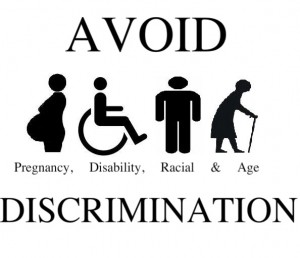Although Title VII of the Civil Rights Act of 1964 outlawed workplace discrimination on the basis of sex, religion, race, color or national origin, that certainly doesn’t mean it ceased to exist. On the contrary, recent cases highlight many of the problems in a system that lets employers off the hook more often than it holds them accountable, leaving many workers frustrated and helpless.
In a case from 2006, Ron Law and 18 of his African-American co-workers at Austal USA shipyards contacted the US Equal Employment Opportunity Commission, the agency tasked with investigating job discrimination complaints, to seek help from racial discrimination and a hostile work environment. After a year passed without any resolution, they gave up hope of ever reaching a favorable conclusion from the commission and asked for permission to go to court on their own instead.
The troubling part is that this case is far from an isolated instance.
Many Cases of Employment Discrimination but Few Positive Outcomes
While the EEOC and its partner agencies close over 100,000 cases annually, claimants seldom receive positive outcomes. For example, only about 18 percent of cases result in workplace reforms or compensation. Although no group fares particularly well with respect to disability, age or gender, racial discrimination cases have the lowest rate of success, with only 15 percent receiving any form of assistance, usually compensation.
Ironically, race cases are also the most common.
Recently, the Center for Public Integrity, a nonprofit news organization, looked at eight years of complaints filed with the EEOC and their state and local counterparts to see how our system handles workplace discrimination. Their review included hundreds of court cases in addition to dozens of interviews with people who filed EEOC claims.
The data, which ranged from 2010 through 2017, revealed that the agency resolves most cases without determining if discrimination ever took place.
In response, many former EEOC employees charge that they simply don’t have adequate resources to pursue cases to the fullest extent. After adjusting for inflation, their budget is smaller today than it was in 1980, not to mention a 42 percent staff reduction. Meanwhile, the workforce has increased by approximately 50 percent.
Doomed from the Beginning
The problem stems from the fact that the EEOC was never imbued with the proper authority to enforce the law when it was created through the Civil Rights Act in 1964. In other words, it was hamstrung right from the beginning. While it could research complaints, mediate between employees and companies, and even refer cases for prosecution, it had no authority to sue or issue cease and desist notices. Essentially, if a company refused to follow the law, there was little, if anything, the commission could do.
The deeper problem may be that, at the time it was created, many members of Congress were against enacting far-reaching federal protections to combat employer discrimination. For example, more than 200 fair employment bills died in Congress in the twenty years prior to the Civil Rights Act.
On the other hand, a provision that made it a criminal offense for the EEOC to disclose the names of companies accused of discrimination remains in effect to this day.
Dwindling Resources Coupled with an Expanding Workforce
Fortunately, in 1972, the commission finally won the right to litigate against companies.
Nevertheless, while the commission’s reach and responsibilities expanded over the years, its staff diminished. For instance, workers now wait an average of two to three months just for an appointment to file a complaint. Furthermore, the number of cases in which workers received some form assistance dropped from 19 percent in 2007 to 13 percent in 2017.
Unfortunately, as in the case of Ron Law and his colleagues, many employees simply give up after being shuffled around by the system. Often, workers are prevented from suing because companies require private arbitration. Rules like these and others reduce the overall number of claims filed.
In Ron Law’s case against Austal USA, a shipbuilder in Mobile, Alabama, a series of lawsuits and appeals yielded nothing for the workers involved; none of them were ever compensated for their claims, and most were subsequently laid off.
An Organization Unable to Fulfill Its Mission
A picture has emerged of a system that falls woefully short of protecting its workers and shows no signs of imminent change.
Unfortunately, right from the outset, the EEOC couldn’t possibly do the job for which it was created by Congress over half a decade ago. And the situation has only gotten worse. The EEOC was a part of the Civil Rights Act’s good faith attempt to stamp out workplace discrimination. However, Congress keeps slashing its budget while the number of workers keeps rising. As a result, the EEOC has neither the money nor the support to fulfill its core mission.
As the second decade of the twentieth century draws to a close, employment discrimination has become more of an unspoken problem in which employees are afraid to speak up in fear in losing their jobs or of retaliation. On the other hand, the ones that do take action rarely receive an acceptable solution despite the actions of well-meaning EEOC officials and experienced employment lawyers.




